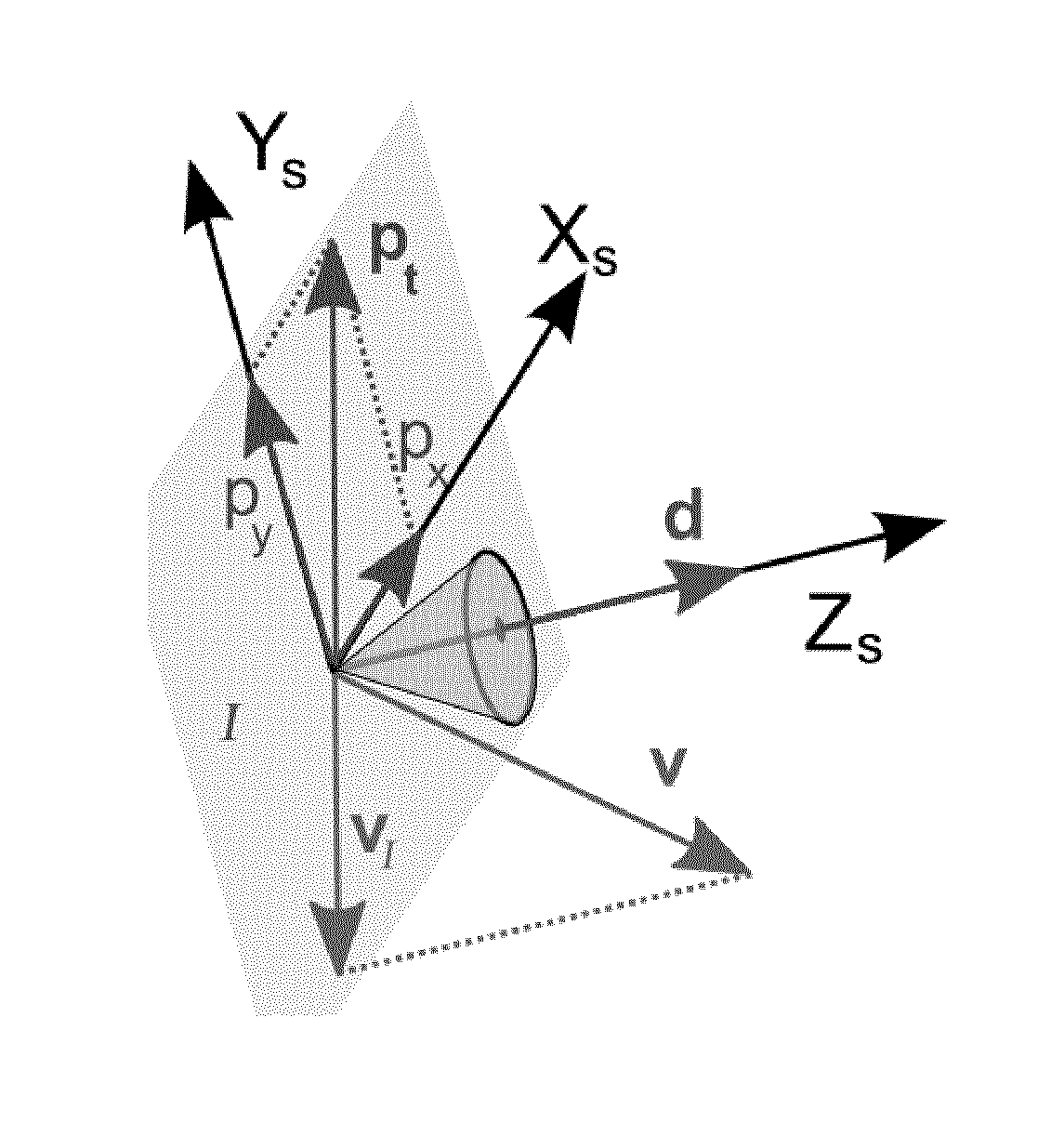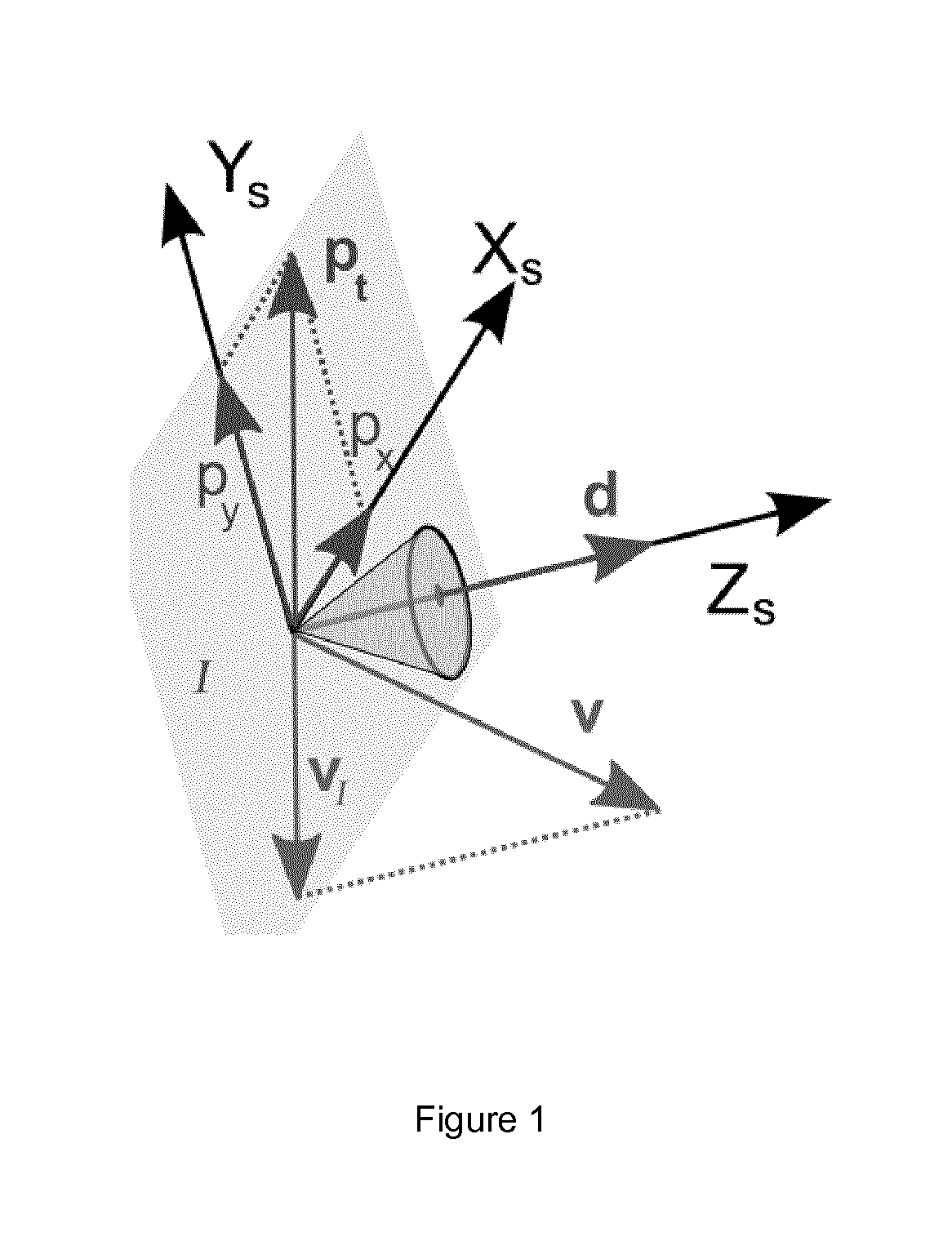Method to determine a direction and amplitude of a current velocity estimate of a moving device
a technology of current velocity and estimation method, applied in the direction of distance measurement, navigation instruments, instruments, etc., can solve the problems of monocular vision-only solutions suffering from the so-called scale ambiguity, and the scale of the velocity remains unknown
- Summary
- Abstract
- Description
- Claims
- Application Information
AI Technical Summary
Benefits of technology
Problems solved by technology
Method used
Image
Examples
Embodiment Construction
[0034]The invention consists in a new method for the estimation of ego-motion (the direction and amplitude of the velocity) of a mobile device comprising optic-flow and inertial sensors (hereinafter the apparatus). The velocity is expressed in the apparatus's reference frame, which is moving with the apparatus. This section introduces the optic-flow direction constraint and describes a method that relies on short-term inertial navigation and the direction of the translational optic-flow in order to estimate ego-motion, defined as the velocity estimate (that describes the speed amplitude and the direction of motion).
[0035]A key characteristic of the invention is the use of optic-flow without the need for any kind of feature tracking. Moreover, the algorithm uses the direction of the optic-flow and does not need the amplitude of the optic-flow vector, thanks to the fact that the scale of the velocity is solved by the use of inertial navigation and changes in direction of the apparatus...
PUM
 Login to View More
Login to View More Abstract
Description
Claims
Application Information
 Login to View More
Login to View More - R&D
- Intellectual Property
- Life Sciences
- Materials
- Tech Scout
- Unparalleled Data Quality
- Higher Quality Content
- 60% Fewer Hallucinations
Browse by: Latest US Patents, China's latest patents, Technical Efficacy Thesaurus, Application Domain, Technology Topic, Popular Technical Reports.
© 2025 PatSnap. All rights reserved.Legal|Privacy policy|Modern Slavery Act Transparency Statement|Sitemap|About US| Contact US: help@patsnap.com



